Koloman Moser retrospective at Neue Galerie, New York
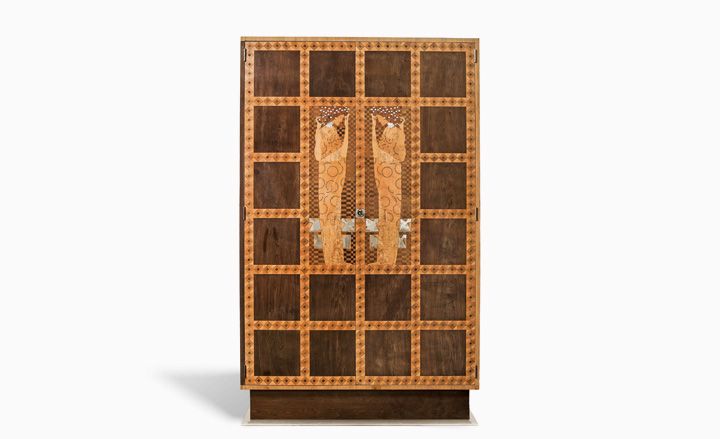
The legendary artist and designer, Koloman Moser, is the centre of a newly unveiled exhibition, taking place at the Neue Galerie in New York City this week. As the first monographic survey of the Viennese designer's work on American soil, the Neue Galerie's retrospective promises to expose the full length and breadth of Moser's work, which touched on graphic design, furniture, jewellery, textiles and much more.
Moser was most notably a co-founder of the Wiener Werkstätte, though because he was overshadowed by his partner Josef Hoffman, he has largely remained an unsung hero of the design world.
Curated by Dr. Christian Witt-Dörring of the Neue Galerie, the exhibition focuses on works from 1897-1907, arguably the most creative period of Moser's career. Moser's artistic foray first began with painting and graphic art, which initially referenced the Art Nouveau style before he developed a more austere aesthetic that became characteristic of Vienna during the time.
Moser was also influential as one of the founding members of the Viennese Secession; a group of artists who sought to present fine art and applied art as one and purveyed a modern Austrian style dominated by clean and simple geometric forms. They were also champions of the notion of 'a total work of art' (Gesamtkunstwerk), to which all aspects of daily life could be seen as an artistic form.
This notion of Gesamtkunstwerk is cleverly expressed in the Neue Galerie's show, thanks to an exhibition design by Chicago-based architect John Vinci. Several galleries are adorned with period wallpaper to emulate the all-encompassing ideology pioneered by Moser. Against this vibrant backdrop, 200 of Moser's works are presented in their full glory, highlighting his wonderful dexterity as a graphic artist, furniture designer and interior architect.
In 1890, Moser, along with Hoffman, became a professor at the School of Applied Arts in Vienna. It was in this capacity (and the later establishment of the Weiner Werkstätte) that Moser and Hoffman successfully set the course for design in Austria, and much of Central Europe, for years to come.
'Koloman Moser helped define the art of his time,' said Ronald S. Lauder, President of the Neue Galerie. 'Today, it is impossible to imagine Vienna without the influence of Moser.'
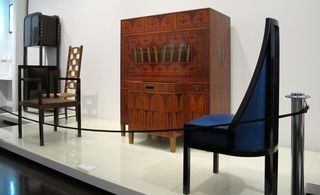
Curated by Dr. Christian Witt-Dörring of the Neue Galerie, the exhibition focuses on works from 1897-1907, arguably the most creative period of Moser's career
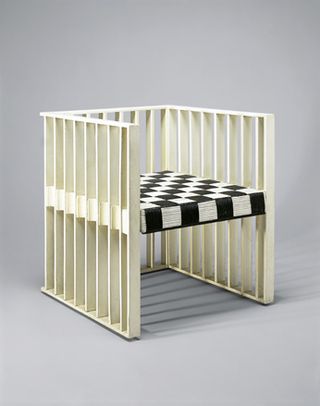
Armchair, ca. 1903, by Koloman Moser.
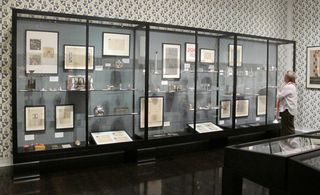
The Neue Galerie's exhibition has been designed by Chicago-based architect John Vinci
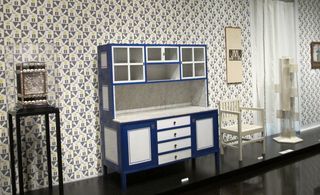
Several galleries are adorned with period wallpaper to emulate the all-encompassing ideology pioneered by Moser
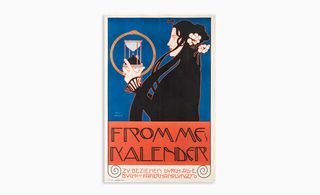
Poster for 'Frommes Kalendar,' 1899. Courtesy: Serge Sabarsky Collection, New York
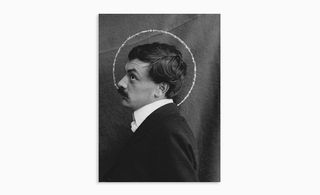
Photograph of Koloman Moser, ca. 1903, Photographer unknown.
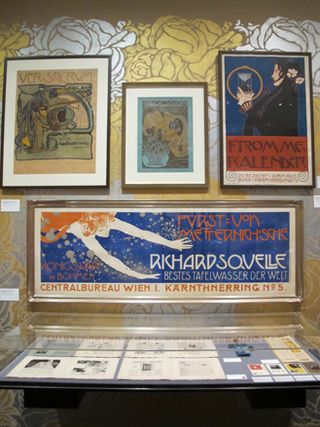
Moser's artistic foray first began with painting and graphic art, which initially referenced the Art Nouveau style before he developed a more austere aesthetic that became characteristic of Vienna during the time
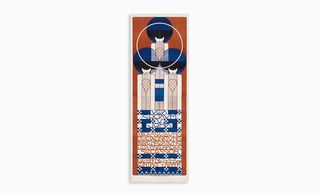
Poster for the Thirteenth Vienna Secession exhibition, 1902. Courtesy: The Museum of Modern Art, New York, Gift of Joseph H. Heil, by exchange, 2010; Digital image courtesy: The Museum of Modern Art / Licensed by SCALA / Art Resource, NY
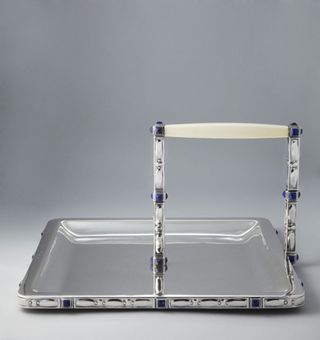
'Centerpiece', 1904, from a private collection.
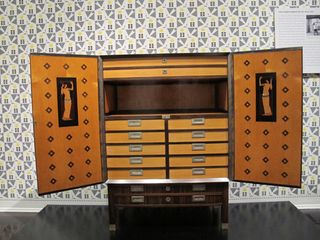
Against a vibrant backdrop, 200 of Moser's works are presented in their full glory, highlighting his wonderful dexterity as a graphic artist, furniture designer and interior architect
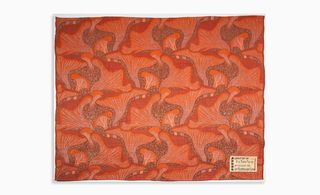
'Textile Schwämme' (Mushrooms), design no. 4003, 1899.
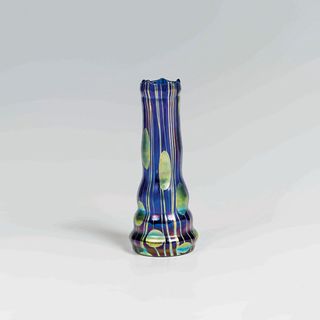
Vase, 1900.
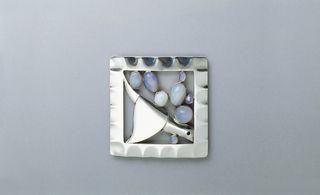
Belt buckle, 1904.
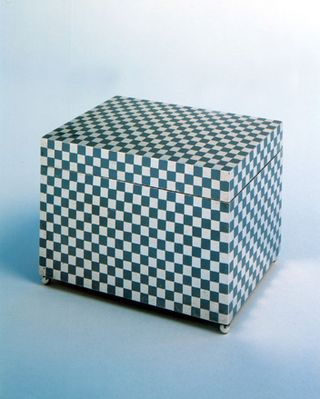
Sugar box, 1903.
ADDRESS
1048, 5th Avenue
New York
NY 10028
Wallpaper* Newsletter
Receive our daily digest of inspiration, escapism and design stories from around the world direct to your inbox.
Pei-Ru Keh is a former US Editor at Wallpaper*. Born and raised in Singapore, she has been a New Yorker since 2013. Pei-Ru held various titles at Wallpaper* between 2007 and 2023. She reports on design, tech, art, architecture, fashion, beauty and lifestyle happenings in the United States, both in print and digitally. Pei-Ru took a key role in championing diversity and representation within Wallpaper's content pillars, actively seeking out stories that reflect a wide range of perspectives. She lives in Brooklyn with her husband and two children, and is currently learning how to drive.
-
 A first look inside Archives of Us, a secret café hidden in Downtown LA
A first look inside Archives of Us, a secret café hidden in Downtown LAArchives of Us is a contemporary café opening in Downtown LA boasting crisp interiors by Studio/ JIALUN XIONG who crafted a caffeinated sanctuary away from the city rush
By Tianna Williams Published
-
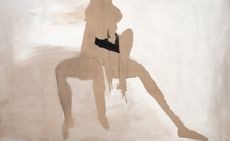 Teresa Pągowska's dreamy interpretations of the female form are in London for the first time
Teresa Pągowska's dreamy interpretations of the female form are in London for the first time‘Shadow Self’ in Thaddaeus Ropac’s 18th-century townhouse gallery in London, presents the first UK solo exhibition of Pągowska’s work
By Sofia Hallström Published
-
 We preview Expo 2025 Osaka: what to expect and who will be there
We preview Expo 2025 Osaka: what to expect and who will be thereExpo 2025 Osaka prepares to throw open its doors in April; we preview the world festival, its developments and highlights
By Danielle Demetriou Published
-
 This rainbow-coloured flower show was inspired by Luis Barragán's architecture
This rainbow-coloured flower show was inspired by Luis Barragán's architectureModernism shows off its flowery side at the New York Botanical Garden's annual orchid show.
By Tianna Williams Published
-
 ‘Psychedelic art palace’ Meow Wolf is coming to New York
‘Psychedelic art palace’ Meow Wolf is coming to New YorkThe ultimate immersive exhibition, which combines art and theatre in its surreal shows, is opening a seventh outpost in The Seaport neighbourhood
By Anna Solomon Published
-
 Wim Wenders’ photographs of moody Americana capture the themes in the director’s iconic films
Wim Wenders’ photographs of moody Americana capture the themes in the director’s iconic films'Driving without a destination is my greatest passion,' says Wenders. whose new exhibition has opened in New York’s Howard Greenberg Gallery
By Osman Can Yerebakan Published
-
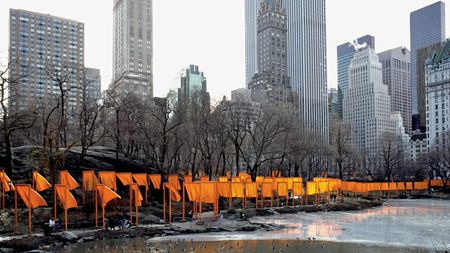 20 years on, ‘The Gates’ makes a digital return to Central Park
20 years on, ‘The Gates’ makes a digital return to Central ParkThe 2005 installation ‘The Gates’ by Christo and Jeanne-Claude marks its 20th anniversary with a digital comeback, relived through the lens of your phone
By Tianna Williams Published
-
 In ‘The Last Showgirl’, nostalgia is a drug like any other
In ‘The Last Showgirl’, nostalgia is a drug like any otherGia Coppola takes us to Las Vegas after the party has ended in new film starring Pamela Anderson, The Last Showgirl
By Billie Walker Published
-
 ‘American Photography’: centuries-spanning show reveals timely truths
‘American Photography’: centuries-spanning show reveals timely truthsAt the Rijksmuseum in Amsterdam, Europe’s first major survey of American photography reveals the contradictions and complexities that have long defined this world superpower
By Daisy Woodward Published
-
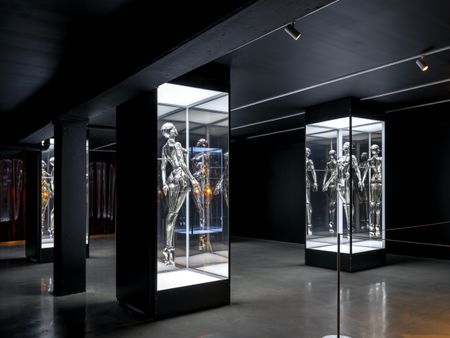 Miami’s new Museum of Sex is a beacon of open discourse
Miami’s new Museum of Sex is a beacon of open discourseThe Miami outpost of the cult New York destination opened last year, and continues its legacy of presenting and celebrating human sexuality
By Anna Solomon Published
-
 Sundance Film Festival 2025: The films we can't wait to watch
Sundance Film Festival 2025: The films we can't wait to watchSundance Film Festival, which runs 23 January - 2 February, has long been considered a hub of cinematic innovation. These are the ones to watch from this year’s premieres
By Stefania Sarrubba Published